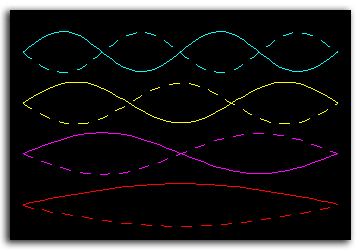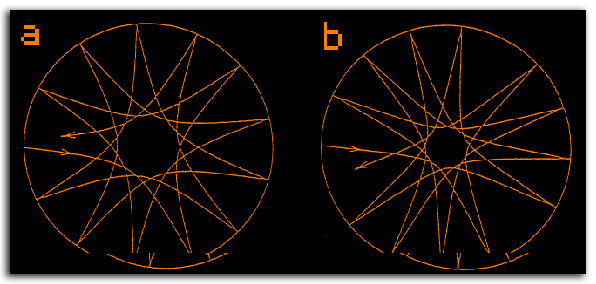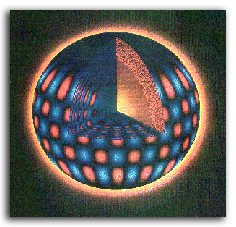Asteroseismology - seismology of the stars
For the non-specialist it may appear somewhat strange that there exists something like 'seismology' of stars. After all, seismology is known as a method to investigate the interior of our Earth, using instruments called 'seismometers' that are installed on its surface. These instruments measure ground movements with an extremely high precision. The movements are caused by acoustic (or 'seismic') waves which travel through the Earth's interior.
|
Earthquakes or artificial explosions cause these waves. Being are acoustic waves, their propagation velocity corresponds to the sound speed of the medium they pass through, depending on the temperature and pressure in the Earth's interior. The seismic signal from some event (like an explosion) may arrive with several seismic waves, which have traveled different paths, with different reflections on the Earth's interior layers or on the surface (Fig. 1). Practically all we know about the Earth's interior has been learned from the observations of seismic waves.
Fig. 2. Oscillation modes in a string. The basic oscillation with the lowest frequency is drawn at the bottom; above are first, second and third of the infinite number of possible harmonics.
These modes are similar to the vibrational modes in a string (Fig. 2), with a base frequency and infinitively many harmonics of higher frequencies. Within a star, harmonics may form in various directions, defined by coefficients l,m,p. The frequencies of the oscillation modes indicate the sound speed of the seismic waves during their travel across the interior of the star. With a 'collection' of harmonics, the sound speed, and consequently temperature and pressure in various depth of a star can be measured (Fig. 3). The detection of the seismic oscillations has been very important to verify theories about the Sun's structure, that is, density, temperature, pressure, and chemical composition throughout its interior. |
Fig 1. Typical paths of an Earthquake's seismic waves through the interior of the Earth (Source: USGS)
So it may be surprising that it is also possible to detect seismic waves in stars, where it is impossible to place any instrument on the surface. First, in contrary to the mostly solid Earth, the stars are large balls of gas. About 30 years ago, it was found that the Sun's surface is slowly rising and descending with periods of a few minutes and velocities of a few meters per second, and that these oscillations are permanently occurring. They are the consequence of seismic waves in the Sun's interior, caused by large scale interior movements of gas. In contrary to terrestrial seismic waves, waves in the solar interior don't lose their energy and are continuously being reflected within the star, forming standing waves. These solar oscillations may appear in a variety of modes, each with its own vibration frequency and specific reflection.
Fig 3. Seismic waves in the interior of stars. The waves in the two modes drawn (with different coefficients 'l') travel to different depths. |
|
Fig 4. Section across a star that is oscillating in a mode with high coefficient 'l' and 'n' (see oscillation modes). The colors indicate colder and warmer zones, corresponding to zones of higher and lower pressure. The COROT logo-type is a star oscillating in a mode with low 'l'. |
For the verification of theoretical models about the structure of any kind of star there is great interest in the detection of their oscillation modes. In the case of the Sun the seismic movements have been detected directly by the rising and falling of zones of its surface, but this is not possible for other stars due to their distance. However, the compression and expansion caused by seismic waves generates changes in the temperature, and consequently in the brightness (Fig. 4). In other stars we can only measure the total brightness variation, which is the sum of the brightness changes in zones of higher or lower surface temperatures. The total brightness variations are very small, in the order of one part in 10 000. Brightness changes that small can only be measured from a space telescope, which is the main motivation to realize a project like CoRoT. |
* Asteroseismology is the most advanced technique for the study of stellar interiors *
Animations of stars in various oscillation modes.
More detailed explication of the oscillation modes.
See a propagation diagram for more information what one can learn about the interior of a star from a study of the oscillation frequencies.













